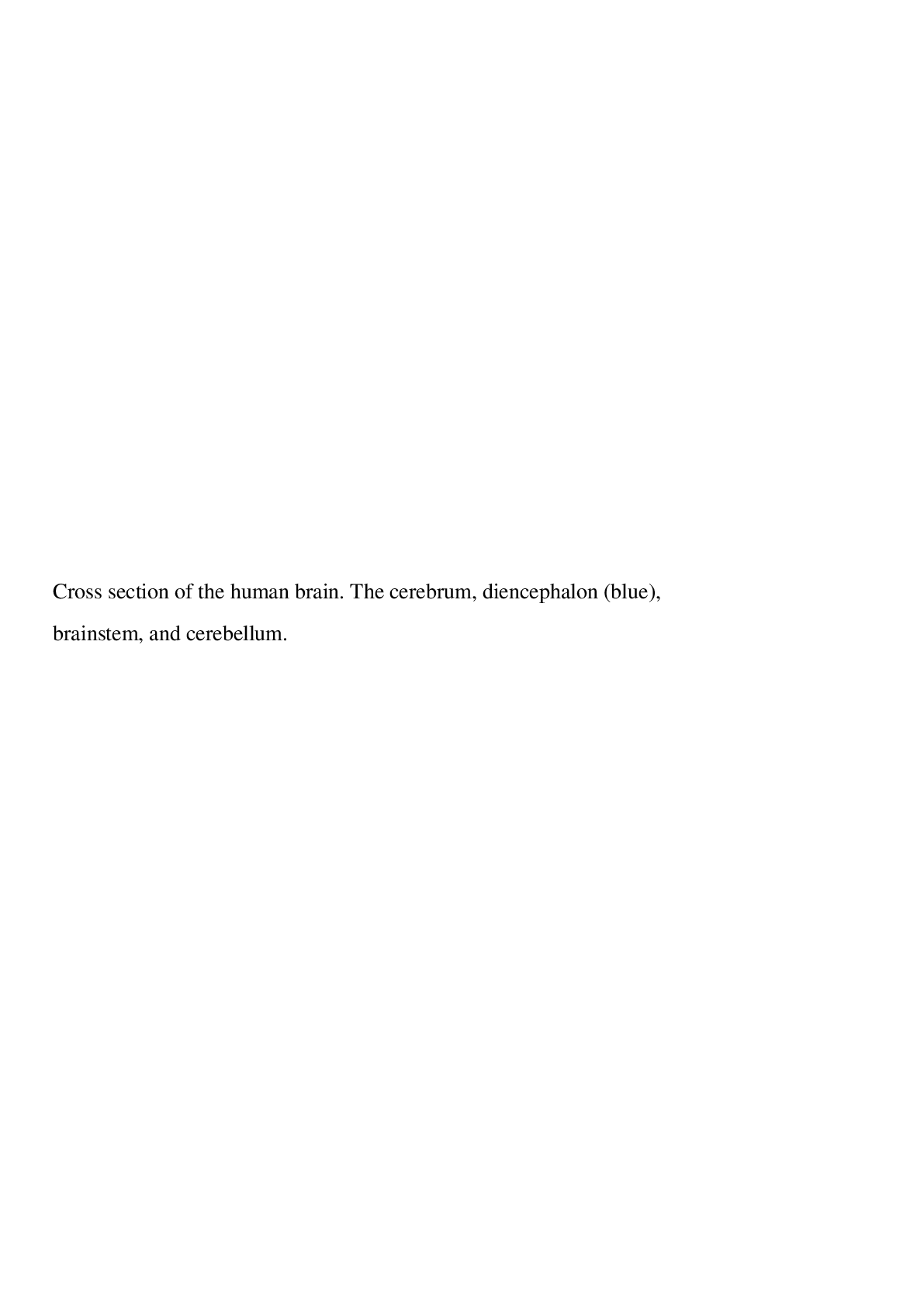*NURSING > QUESTIONS & ANSWERS > ATI Capstone Post Assessments Questions with Accurate Answers with Explanation (All)
ATI Capstone Post Assessments Questions with Accurate Answers with Explanation
Document Content and Description Below
A pregnant client has a history of giving birth to one set of twin boys, one term girl and 2 early spontaneous abortions. What is her gravida and para? - Ans-She is gravida 4, Para 2 Gravida indicate... s the number of times the mother has been pregnant, regardless of whether these pregnancies were carried to term. A current pregnancy, if any, is included in this count. Para indicates the number of >20 wks births (including viable and non-viable i.e. stillbirths). Pregnancies consisting of multiples, such as twins or triplets, count as ONE birth for the purpose of this notation. A nurse is providing care for an uncircumcised male newborn and his mother. What information should be provided during discharge regarding bathing of the penile area of the newborn male? - Ans-To cleanse an uncircumcised penis, wash with soap and water and rinse the penis. The foreskin should not be forced back or constriction may result. The 24-year-old client inquires about use of the diaphragm for birth control. What five (5) instructions would be provided by the nurse to explain use of the diaphragm? - Ans-●A client should be properly fitted with a diaphragm by a provider. ●Replaced every 2 years and refitted for a 20% weight fluctuation, after abdominal or pelvic surgery, and after every pregnancy. ●Requires proper insertion and removal. Prior to coitus, the diaphragm is inserted vaginally over the cervix with spermicidal jelly or cream that is applied to the cervical side of the dome and around the rim. The diaphragm can be inserted up to 6 hr before intercourse and must stay in place 6 hr after intercourse but for no more than 24 hr. ●Spermicide must be reapplied with each act of coitus. ●A client should empty her bladder prior to insertion of the diaphragm. ●Diaphragm should be washed with mild soap and warm water after each use. A nurse is providing teaching about fibrocystic breast tissue with a client. What information will the nurse share with the client about diagnostics used to confirm the diagnosis? - Ans-Diagnostics for fibrocystic breast tissue include breast ultrasound and fine-needle aspiration. A client asks the nurse how often she should get a Papanicolaou (Pap) test. What is the correct response by the nurse to the client? - Ans-21: All women begin screening for cervical cancer 21-29: Pap test every 3 years; HPV unnecessary unless needed following an abnormalPap test 30-65: Pap and HPV every 5 years Older than 65: May discontinue testing if regular screenings have been negative; If diagnosed with cervical precancer, continue to screen List three (3) actions by the nurse should take during the assessment and data collection steps. - Ans-Recognize patterns or trends. Compare the data with expected standards or reference ranges. Arrive at conclusions to guide nursing care. When witnessing an informed consent the nurse must ensure that the provider gives the client the necessary procedural information. Identify information the provider should disclose to the client to obtain an informed consent. What is the role of the nurse in this process? - Ans-The Provider obtains the informed consent. To do so, the provider must give the client: · The purpose of the procedure· A complete description of the procedure. · A description of the professional who will perform and participate in the procedure. · A description of the potential harm, pain or discomfort that might occur. · Options for other treatments. · The option to refuse treatment and the consequences of doing so. The nurse must notify the provider if the client has more questions or appears not to understand any of the information. The provider is then responsible for giving clarification. Discuss passive and active immunity. - Ans-Passive: Antibodies are produced by an external source. Temporary immunity that does not have memory of past exposures. Intact skin, the body's first line of defense. Mucous membranes, secretions, enzymes, phagocytic cells, and protective proteins. Inflammatory response with phagocytic cells, the complement system, and interferons to localize the invasion and prevent its spreadActive: Antibodies are produced in response to an antigen. Requires time to react to antigens. Provides permanent immunity. Involves B- and T-lymphocytes. Produces specific antibodies against specific antigens (immunoglobulins [IgA, IgD, IgE, IgG, IgM]) List at least three (3) priority considerations when performing a sterile dressing change. - Ans--Prolonged exposure to airborne micro-organisms can make sterile items non-sterile. -Avoid coughing, sneezing, and talking directly over a sterile field. -Air movement should be controlled by special ventilation. -Only sterile items may be in a sterile field. -The outer wrappings and 1-inch edges of packaging that contains sterile items are not sterile. -The inner surface of the sterile drape or kit, except for that 1-inch border around the edges, is the sterile field to which additional sterile items may be added. -To position the field on the table surface, it is acceptable to grasp the 1-inch border before donning sterile gloves. -Any object that comes into contact with the 1-inch border must be discarded. -Touch sterile materials only with sterile gloves. -Any object held below the waist or above the chest is considered contaminated. -Sterile materials may touch other sterile surfaces or materials; however, contact with non-sterile materials at any time renders a sterile area contaminated, no matter how short the contact. -Microbes can move by gravity from a non-sterile item to a sterile item: Do not reach across or above a sterile field. -Do not turn your back on a sterile field. -Hold items to be added to a sterile field at a minimum of 6 inches above the field. -Any sterile, non-waterproof wrapper that comes in contact with moisture becomes non-sterile by a wicking action that allows microbes to travel rapidly from a non-sterile surface to the sterile surface. -Keep all surfaces dry. -Discard any sterile packages that become wet. A nurse is caring for an elderly client with constipation. What are three (3) complications to monitor for during care of this client? - Ans-Complications of constipation include:Fecal impaction.Development of hemorrhoids or rectal fissures.Bradycardia, hypotension, and syncope associated with the Valsalva maneuver (occurs with straining/bearing down). A nurse is caring for a client who has refused his morning medications. How should the nurse respond to the client? - Ans-The nurse should recognize the client's right to refuse any medication. The nurse should explain the consequences of not taking the prescribed medications and encourage the client to take the medications as prescribed by the provider. The nurse is caring for a client recently diagnosed with depression. The client was prescribed an SSRI antidepressant. What assessment findings should be reported to the provider for a client taking this medication? - Ans-Potential complication/adverse effects to be reported to the provider: Sexual dysfunction Insomnia, agitation, anxiety Changes in weight Withdrawal syndrome - headache, nausea, visual disturbance, anxiety, dizziness and tremors Hyponatremia Rash Sleepiness, lightheadedness, faintness Gastrointestinal bleeding Bruxism Serotonin syndrome (Can begin 2-72 hours after starting treatment and can be lethal) Mental confusion, delirium Fever, tachycardia, elevated blood pressure Abdominal pain, diarrhea Irritability, mood swings, agitation, anxiety, restlessness Incoordination, hyperreflexia, diaphoresis, tremors, muscle spasms Cardiovascular shock, seizures, death A client is prescribed a protease inhibitor—ritonavir. Identify three (3) nursing considerations when administering a protease inhibitor. - Ans-Instruct client to report all other the counter medications; except for indinavir, take protease inhibitors with food to increase absorption; administer with another antiretroviral; advise barrier form of contraception; advise diet high in calcium and vitamin D. A nurse is caring for a client who has a new prescription for alosetron. What are the expected therapeutic effects of this medication? - Ans-Effectiveness of alosetron can be evidenced by relief of diarrhea, and decrease in urgency and frequency of defecation. A client has been prescribed oxybutynin for treatment of overactive bladder and has been experiencing anticholinergic side effects. List two (2) actions the client will take to prevent adverse effects of the medication therapy. - Ans-Adverse Effects of oxybutynin: Constipation, dry mouth, blurred vision, photophobia, dry eyes, CNS effects (hallucinations, confusion, insomnia and nervousness) Client Actions: Increase dietary fiber; Consume 2 to 3 L/day of fluid from beverage; Avoid hazardous activities if my vision is impaired A nurse has provided education to a client with hypothyroidism who has a new prescription for levothyroxine. What statements by the client would indicate they understand the instructions? - Ans-The following client statements indicate understanding of the nurse education concerning their levothyroxine prescription: take the medication daily on an empty stomach 30 to 60 min before breakfast; will verbalize the importance of lifelong replacement (even after improvement of symptoms) and will not to discontinue the medication without checking with the provider; will check with the provider before switching to another brand of levothyroxine; will monitor and report signs of cardiac excitability (angina, chest pain, palpitations, dysrhythmias); and will have T4 and TSH levels drawn as directed by their provider. A nurse is administering vancomycin to a client who develops an infusion reaction sometimes referred to as red man syndrome. What action by the nurse could have prevented this reaction? - Ans-Infusion reactions (rashes, flushing, tachycardia, and hypotension, sometimes called "red man syndrome") is an adverse effect of vancomycin administration that could be prevented by administering vancomycin slowly over 60 min. Protamine sulfate is the antidote for heparin overdose. What are two (2) nursing considerations for the administration of protamine sulfate? - Ans-Protamine should be administered slowly IV, no faster than 20 mg/min or 50 mg in 10 min. Do not exceed 100 mg in a 2‑hr period. A nurse is providing teaching to a client who is prescribed methotrexate for chemotherapy treatment. What should the nurse include in the teaching for this medication? - Ans-Instruct clients to take the medication on an empty stomach. Advise clients to protect the skin from sunlight.Advise female clients to use birth control during and for 6 months after completing treatment (Pregnancy Risk Category X). A nurse is providing discharge teaching to a client prescribed ketorolac, what adverse effects should the client report to the provider? - Ans-Gastrointestinal discomfort - Dyspepsia, Abdominal pain, heartburn, nausea Impaired Kidney function - Decreased urine output, weight gain from fluid retention, Increased BUN, and creatinine levels Increased risk for bleeding - hematomas, bleeding gums, blood in vomit or stool, decreased Hematocrit and Hemoglobin Ketorolac is contraindicated in clients who have advanced kidney disease. Use should be no longer than 5 days due to the risk of kidney injury. Ketorolac should not be used concurrently with other NSAIDS. A nurse is caring for a client following a bone marrow biopsy. What information should the nurse include in the discharge teaching? - Ans-Teach the client to report excessive bleeding and evidence of infection to the provider.Teach the client to check the biopsy site daily. Keep the dressing clean, dry, and intact.If sutures are in place, remind the client to return in 7 to 10 days to have them removed. Define the following types of urinary incontinence: stress, functional, and total. - Ans-There are three major types of urinary incontinence: Stress - The loss of small amounts of urine when laughing, sneezing, or lifting primarily due to weak pelvic muscles, urethra, or surrounding tissues. Functional - The inability to get to the bathroom to urinate due to physical, cognitive, or social impairment. Total - The unpredictable, involuntary loss of urine that does not generally respond to treatment. A nurse is caring for a client with colorectal cancer who is scheduled for a colectomy. What pre and post-operative teaching should be provided? - Ans-Preoperative Educate the client regarding preoperative diet (clear liquids several days prior to surgery). Instruct the client to complete bowel prep with cathartics as prescribed. Inform the client of the administration of antibiotics (neomycin, metronidazole) to eradicate intestinal flora.Postoperative Educate the client regarding the care of the incision, activity limits, and ostomy care, if applicable. The nurse is caring for a client with suspected bacterial meningitis. What is a priority action for the nurse to initiate? - Ans-Isolate the client and maintain droplet precautions per facility protocol. A child was sent home from school with head lice. The child's mother has called the help line nurse for guidance. What are three (3) measures the nurse will inform the mother about to address the infestation of pediculosis capitis? - Ans-Interventions for Infestation Shampoos containing 1% permethrin as prescribed. [Show More]
Last updated: 2 years ago
Preview 1 out of 12 pages

Buy this document to get the full access instantly
Instant Download Access after purchase
Buy NowInstant download
We Accept:

Reviews( 0 )
$10.00
Can't find what you want? Try our AI powered Search
Document information
Connected school, study & course
About the document
Uploaded On
Jun 10, 2022
Number of pages
12
Written in
Seller

Reviews Received
Additional information
This document has been written for:
Uploaded
Jun 10, 2022
Downloads
0
Views
130












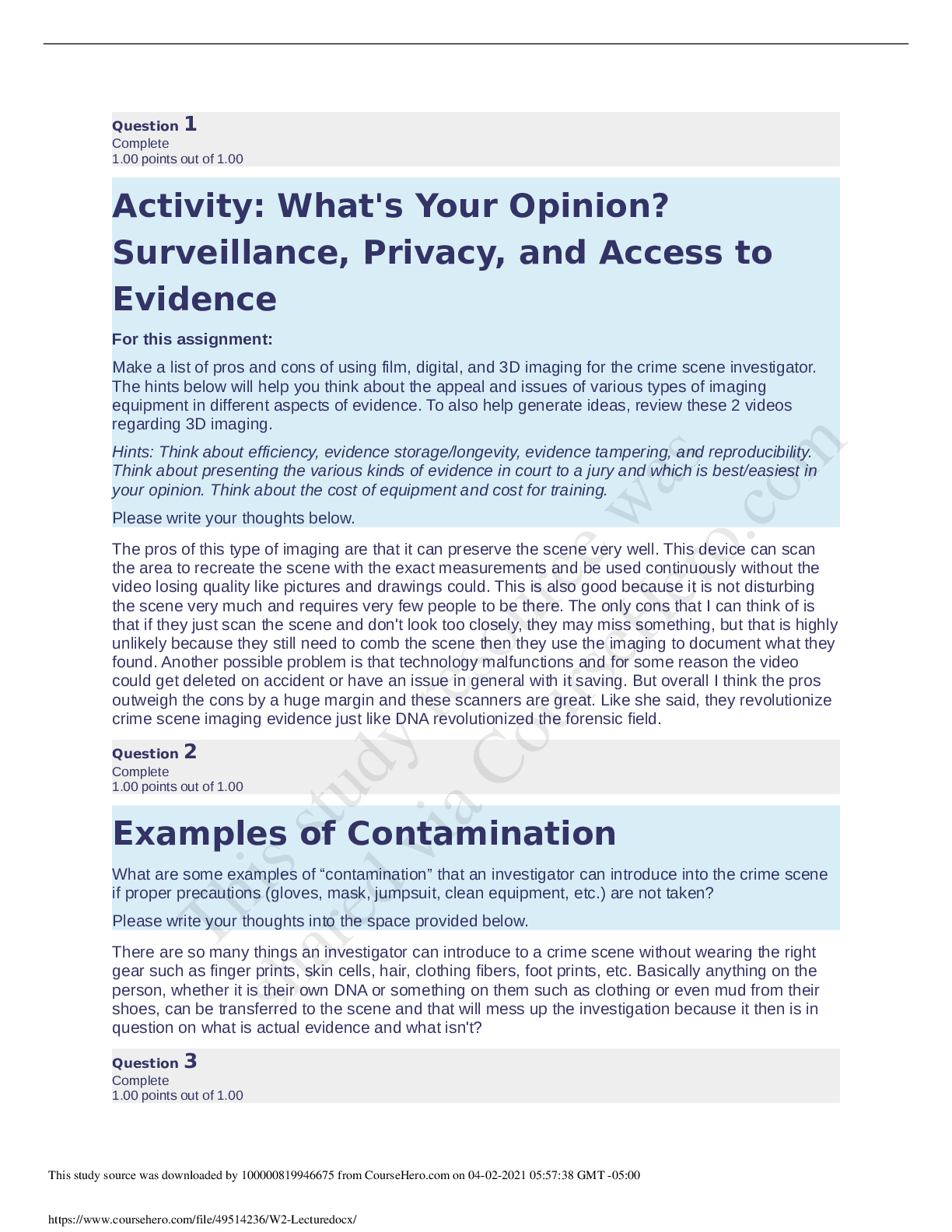
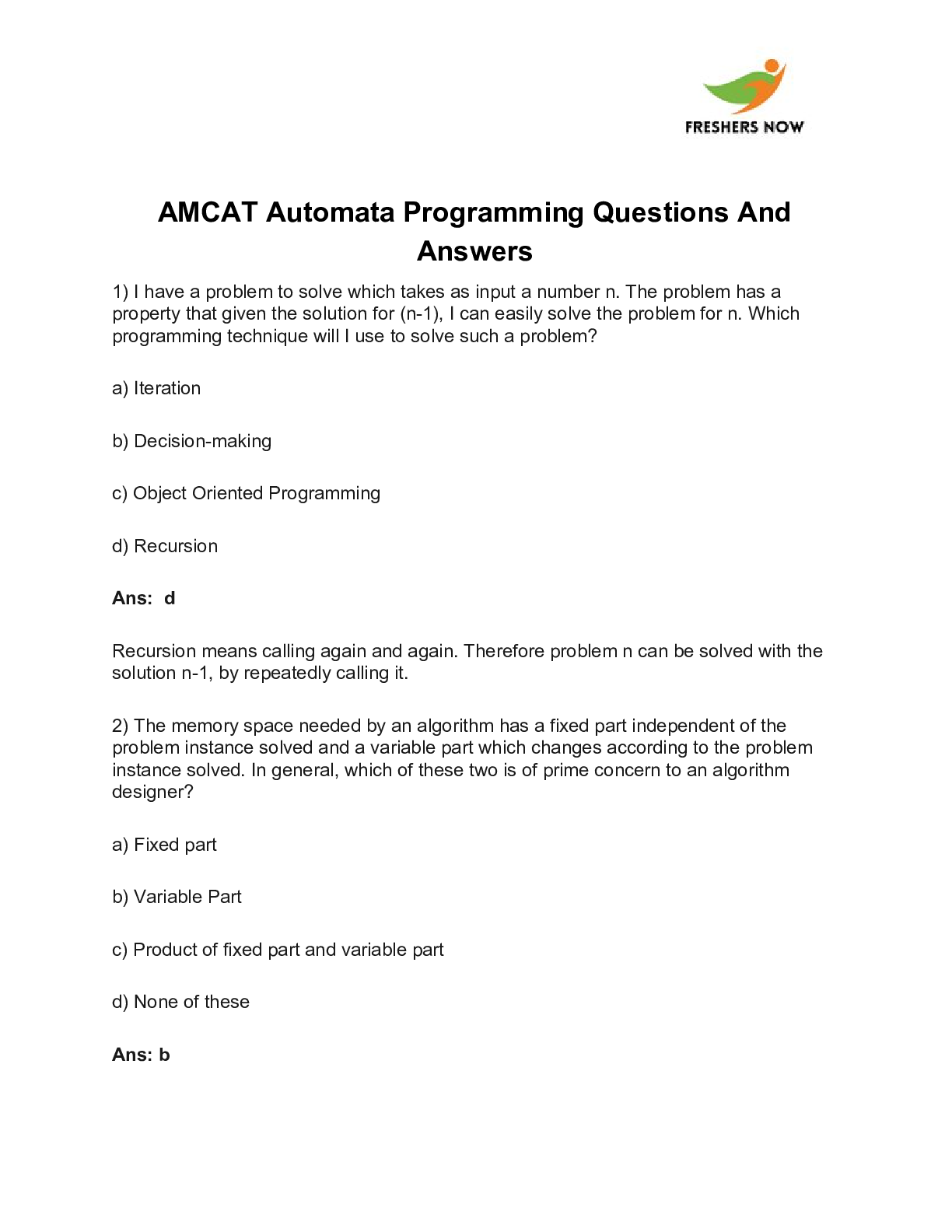
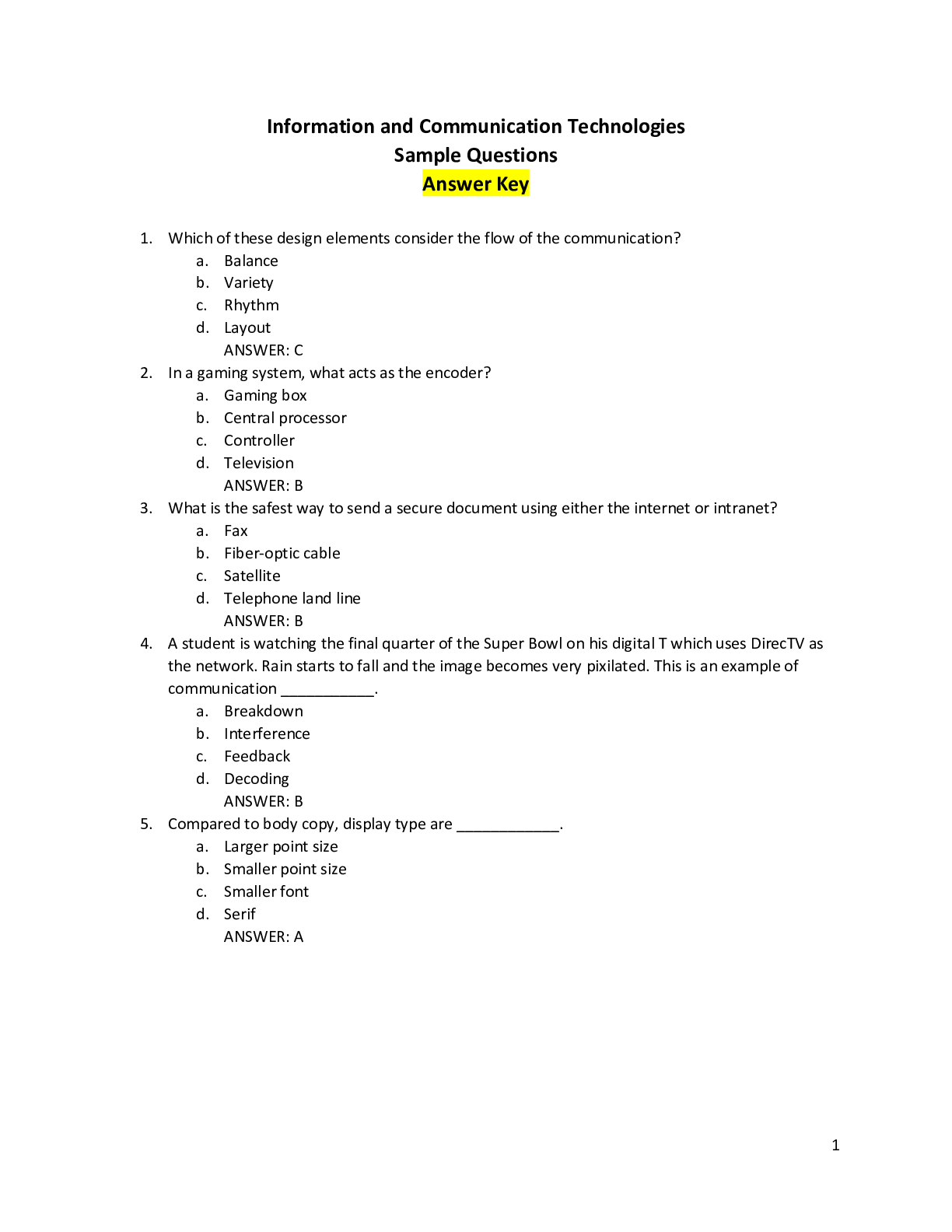


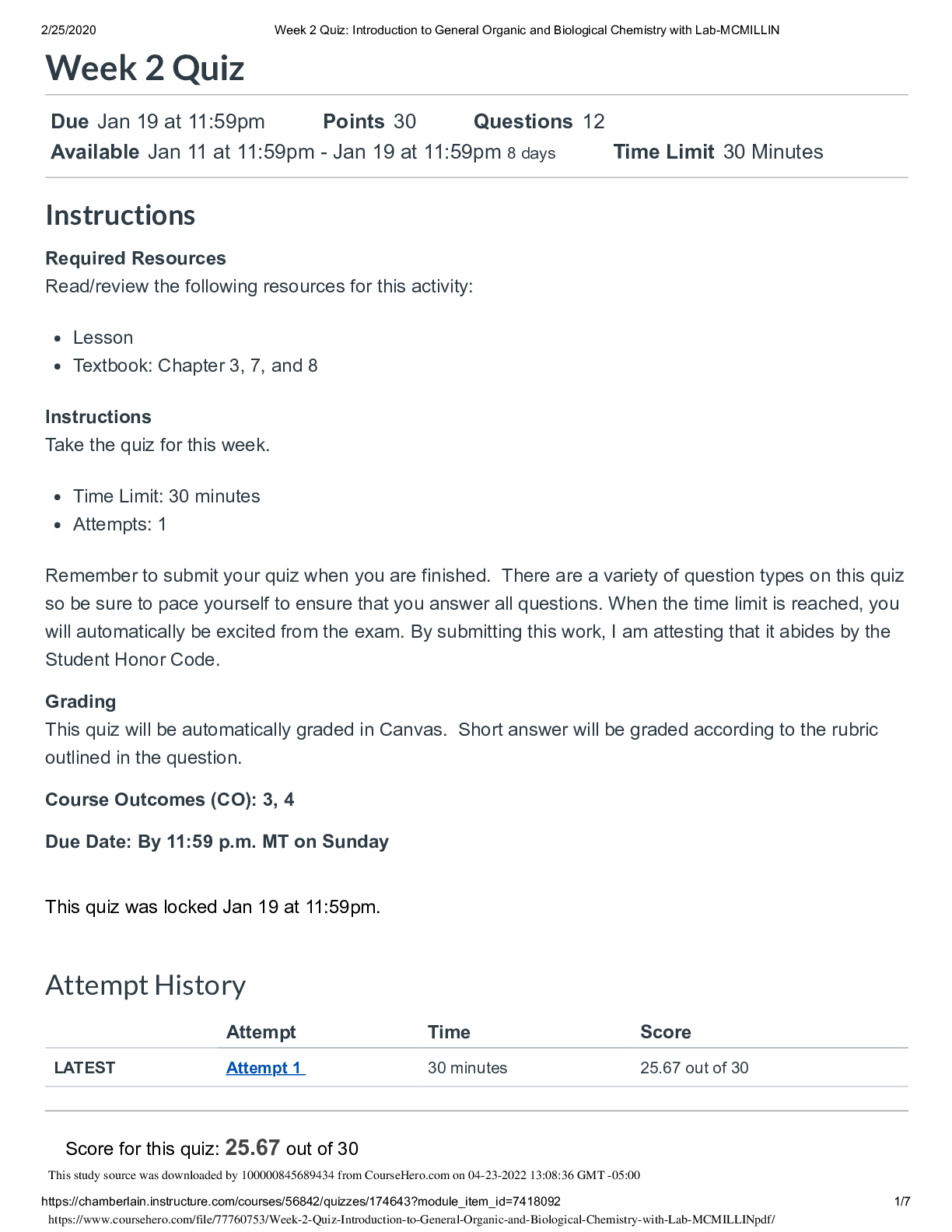

.png)

